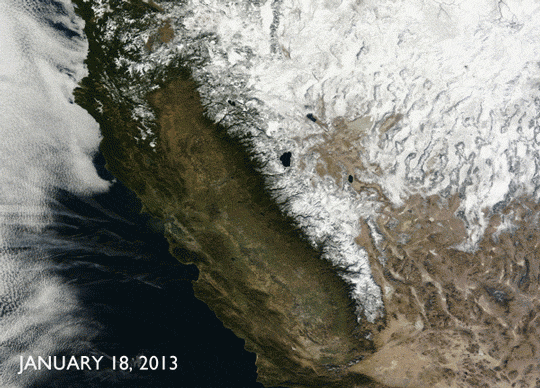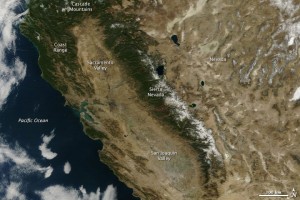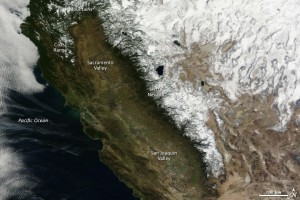
If you live in California, snowpack is a pretty crucial part of your existence.
That's because about a third of the state's water supply comes from snow that accumulates in the mountains, mostly during the winter months. In fact, California receives roughly half of its entire year's water supply between December and February alone.
And that's why there is very reasonable cause for alarm this year, as Gov. Jerry Brown underscored in his recent emergency drought declaration.
Although 2013 turned out to be one of California's driest years on record, it began, at least, with a relatively solid layer of snow cover in the mountains. 2014, on the other hand, has started out far less auspiciously, as these NASA satellite images make clear. On the heels of two years of below-normal precipitation in the state, this winter's warm, dry conditions with anemic snow accumulation have given way to bare mountains and brown landscapes. With snowpack this month between 10 and 30 percent of its normal level, January 2014 will likely go down as California's driest January on record.


Captured from NASA’s Terra satellite and published on the agency's Earth Observatory site, the two images contrast conditions from January 18 of this year and last year. The photos speak for themselves: this year, the Sierra Nevada range has only a tiny fraction of the snow it had last year, and the Coast Range and Cascade Mountains are now pretty much dry to the bone.